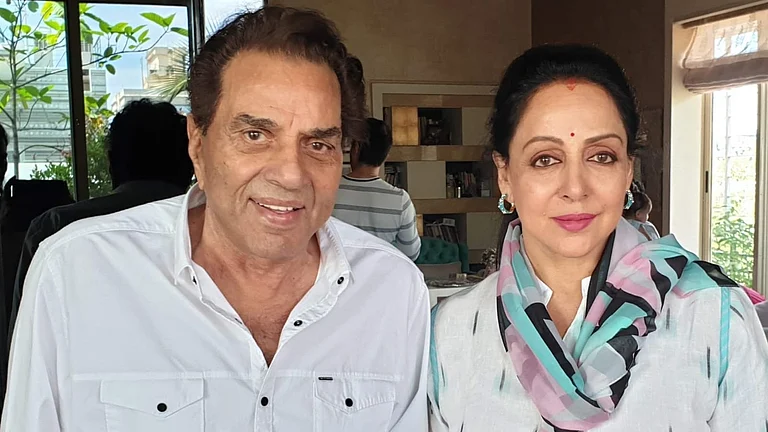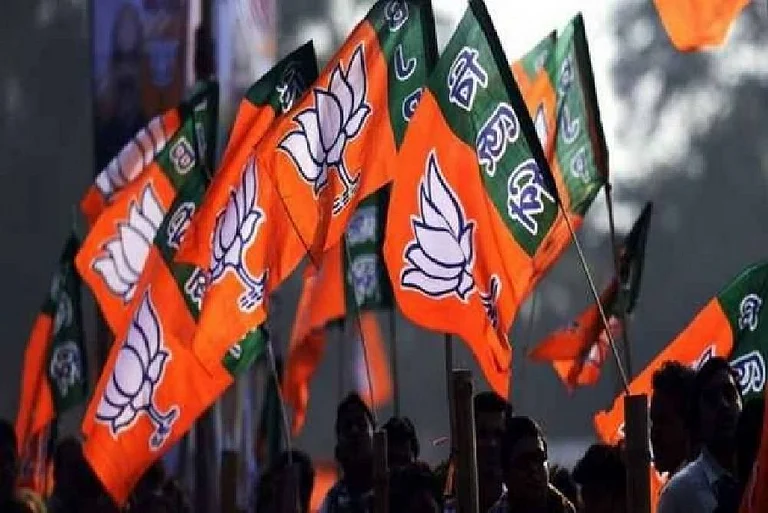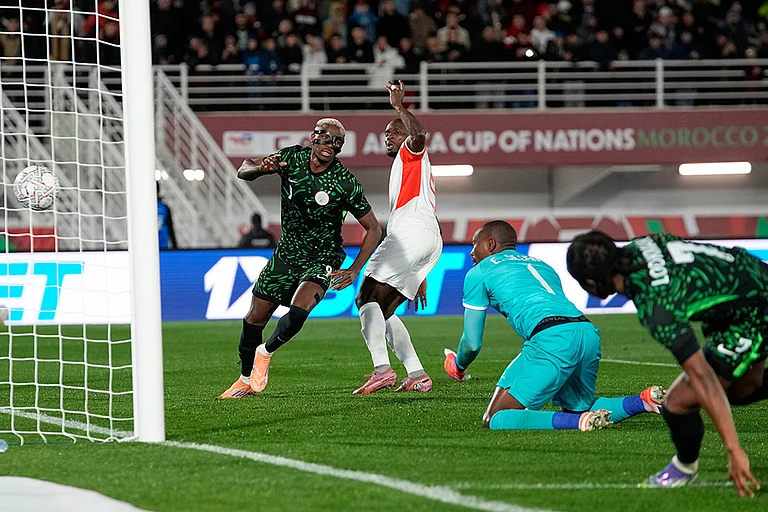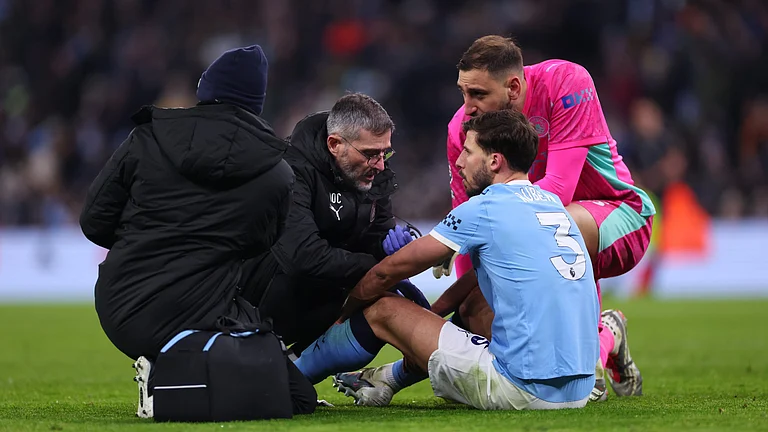It was a Thursday, bright and sunny, when Shaman Gupta, 33, and Gautam Ramachandra, 24, were dragged out of Aasra, a shelter home for trans and queer survivors of violence, and bundled into a police jeep. They were driven straight to DLF Phase-3 police station in Gurgaon, a satellite town of India’s capital New Delhi.
Gupta and Ramachandra, both of whom identify as transmen, allege they were beaten up in the jeep and later at the police station. They were also not allowed to make phone calls or provided with any official paperwork for being detained.
Neither Gupta nor Ramachandra is an inmate of the shelter home from where they were picked up. They work as volunteers and board members for Transgender Welfare Equity & Empowerment Trust or Tweet Foundation. Started in 2017, this not-for-profit organisation works out of New Delhi and Mumbai, helping transmen who face violence. They claim that they were harassed by the family of a queer man they were trying to help.
“The Tweet Foundation has been working on providing a safe space for Deep, a transman from Uttar Pradesh (UP),” Ramachandra tells Outlook. “He ran away from home after facing immense physical and mental abuse.”
Deep’s father, Krishna Kant Singh Haidergarh, is a police officer deputed at the Barabanki police station in Uttar Pradesh. He alleged that the Tweet Foundation had kidnapped Deep. His father calls Deep hsi daughter, says Sandeep Kumar, station house officer (SHO), DLF Phase-3 police station.
“On September 1, Deep’s father turned up at our shelter home in Gurgaon in his uniform,” says Ramachandra. “His wife and son were with him. They demanded that we return Deep.”
He added that Deep’s family was accompanied by two more men. “They, along with Deep’s father and brother, roughed us up.”
The police, however, deny mistreating Ramachandra and Gupta. “There were complaints from both sides,” says SHO Kumar. “We’ve investigated them both thoroughly. While there is no proof of kidnapping, there is also no proof of harassment as reported by the shelter home workers. They were simply questioned by the police.”
Ramachandra and Gupta have filed a general diary at the same police station. “We have submitted the medical report confirming our injuries. We were told by the SHO that they are investigating the case and that it will all depend on the medical report,” says Ramachandra.
While the case is still under investigation, gender rights activists claim that it illustrates the vulnerable position of trans people in India.
On the run
Deep’s troubles with his family and the law can be reconstructed from his statements to the police and legal notices he has sent to his family, all of which Outlook has reviewed.
He ran away from his home in Lucknow, the capital of Uttar Pradesh. Arriving in New Delhi, about 550 km northwest of Lucknow, Deep appealed to the Tweet Foundation to provide him with shelter from abuse and violence at home.
“I know if I go back home, I will not be able to come out again. They will either kill me or get me married. Being a transman, I’m not okay with that... I need a safe place,” he wrote in a letter on July 24. On August 6, Deep recorded a statement at the Govindpuri police station in South Delhi, where the Tweet Foundation’s shelter home was then located, before shifting to Gurgaon later that month.
He also sent a legal notice to his home address in Lucknow on August 16 through his lawyers, asking his family to desist from threatening him and informing them of his decision to seek shelter at Tweet Foundation. The letter, however, was returned. He then emailed the notice to his family.

After the incidents at the Gurgaon shelter home, the Tweet Foundation had put out a statement in which they claimed that the Govindpuri police station had confirmed Deep’s right to live independently as an adult transgender person.
In 2014, the Supreme Court recognised transgender people as the third gender and ordered the government to provide them with quotas in jobs and education like other minorities. Since then, the government has also passed several laws to protect trans people. The Transgender Persons (Protection of Rights) Act, 2019, and the Transgender Persons (Protection of Rights) Rules, 2020, mandate the creation of “institutional and infrastructural facilities, including but not limited to temporary shelters, short-stay homes and accommodation” in order to protect the rights of the transgender community.
However, incidents like the one at the Aasra shelter home reveal a different reality on the ground, said Abheena Ahir, co-founder of Tweet Foundation. “Transpeople are vulnerable to exploitation and abuse at all levels and there are hardly any mechanisms for redress.”
A lax law?
According to the 2011 Census, there were about 4.80 million transgender persons in India—a number that has risen significantly over the past decade. They were first recognised as the third gender by the Election Commission of India, which allowed them to register as “other” on their voter ID cards.
Traditionally, transpeople in India have been referred to as hijra. They often live on the margins of society and in poverty, making a living by singing and dancing or begging and prostitution. They often face discrimination, with even hospitals refusing to admit them in some cases.
The 2014 Supreme Court judgment, popularly known as the NALSA verdict, was a victory for the queer community that has been fighting legal battles for recognition and rights for decades.
“Recognition of transgender as a third gender is not a social or medical issue, but a human rights issue,” Justice K. S. Radhakrishnan, who headed the two-judge bench, had said in the ruling. “Transgender (persons) are also citizens of India” and they must be “provided equal opportunity to grow.”
Another judgment in a 2015 case by the Delhi high court seemed to reaffirm the link between legal recognition of gender and other rights. “A transgender [person’s] sense or experience of gender is integral to their core personality and sense of being. Insofar as I understand the law, everyone has a fundamental right to be recognised in their chosen gender,” said Justice Siddharth Mridul, while hearing the petition of a 19-year-old transman seeking protection from abuse by his family.

Recognition does not, however, lead to protection very easily. Harassment and discrimination continue unabated. A 2017 study by data website Statista showed that only 17 per cent of the 500 respondents in an online survey claimed that they were acquainted with trans people. “We work with the Union Ministry of Social Justice,” says Ramachandra, “and we have a well-connected network of activists, journalists, and civil society professionals. Yet, we faced harassment and assault.”
He says that both the law itself and the social attitudes make transpeople vulnerable.
“The 2019 Act does not seem to consider violence against transpeople a serious crime,” he observes. The penalty for serious offences like rape, sexual abuse, harassment or assault could often be as low as imprisonment for two years and a meagre fine.
“The police are sometimes sympathetic to transwomen or the hijra community,” he adds. “They face the full brunt of patriarchal discrimination as they are biologically women. They also fight rampant transphobia.”
Jumping through hoops
Getting recognition as a transperson to avail of government schemes and benefits can be a bureaucratic nightmare. To get a certificate or trans ID card, one has to apply to the district magistrate in their area. This application can be submitted on the basis of a self-declared identity, followed by an address verification.

However, to seek a change of legal gender, an applicant needs to provide proof of surgery. This proof must be issued by hospital authorities and verified by the district magistrate.
“The NALSA verdict does not say anywhere that gender reassignment surgery is essential for proving trans identity,” says Dr Aqsa Shaikh, a New Delhi-based medical practitioner. “The 2019 Act, however, does exactly that—it makes gender reassignment a criteria for being approved as a transperson.” Dr Shaikh tells Outlook that the transgender card was issued only to men who had transitioned into women or vice versa. “Those people who are getting some medical intervention such as hormone therapy are also considered under exceptions,” she adds. “But not all want surgery or hormone therapy.”
The Act acknowledges “intersex variations” such as hijra, eunuch, kinnar, aravani and other transcommunities that exist in India, but it fails to clearly define “transgender”. Dr Shaikh, who has worked on the health rights of the transpeople, claims the Act arbitrarily clubs all shades of transidentity under the “transgender” umbrella. While the gender identity of transgender people is different from the assigned sex at birth, “intersex variants” are based on biological features and don’t need surgery. The Act, however, has led to a rise in the number of unnecessary surgeries being performed on intersex children, to get a conversion card.
“The two-step verification process for issuing trans ID cards is itself demeaning and against the spirit of self-determination espoused in the NALSA verdict,” she adds. “Why should a transperson have to prove their gender identity to avail of equal rights that are the default for other citizens in the country? This puts the onus of welfare on the community and not on the State.” The doctor mentions that though the trans ID needs to be issued within 30 days of the application being filed, there are often delays. Many transpeople who have run away from home to escape violence or intolerance do not want residence verification as the addresses mentioned in their documents are of their families of birth.
Caste, class… privilege
Instead of exploring the diversity of class, caste and gender in the trans community, the 2019 Act tries to enforce old binaries of gender, claims Grace Banu, a Dalit and transgender activist from Tamil Nadu. “You either have to be a converted woman or a converted man,” Banu tells Outlook. “But the diversity in the community goes beyond gender.”

She says the community is also diverse in terms of class and caste. “Transgender people don’t live in a vacuum,” says Banu. “Large sections of the transpeople community belong to Dalit, Bahujan and Adivasi communities. We have to deal with double discrimination—both in and outside the community.” Dalits are at the bottom of the caste pyramid, a brutal social hierarchy governed by ritual purity, found mostly in Hindu society. Bahujan refers to the several oppressed castes, who are above the Dalits in the caste pyramid but belong to the lowest category of the varna system. While Dalits have benefitted from some affirmative action, such as reservation in government jobs or seats in government educational institutions since Independence, Bahujan movements became stronger in the 1970s and 1980s. However, socio-economic research reveals that Bahujans continue to lag behind the dominant castes in most indicators of social progress, such as education and jobs.
The NALSA judgment directed the central and state governments to treat transpeople “as socially and educationally backward classes of citizens and extend all kinds of reservations in cases of admission in educational institutions and for public appointments”. Governments have responded by providing vertical reservations, but activists such as Banu claims this does not really work.“The government is trying to club transpeople with Other Backward Classes (OBCs),” says Banu. OBC is a statutory recognition for different Bahujan communities to provide them with the benefits of affirmative action. “But all transpeople are not from OBC,” says Banu. “This will lead to a wider discrepancy in the trans community, perpetuating caste- or class-based discrimination,” she adds. “It also means that those with the least privilege will miss out.”
Trans Rights Now Collective, a NGO founded by Banu, has been advocating for horizontal reservations. “This would mean a separate category for transpeople with distinct subcategories for Dalit, Adivasi, Bahujan transpersons,” she says.
Not all are lucky
In March this year, Arvey Malhotra, 16, a non-conforming student jumped to death from the 56th floor of the building in which they lived after enduring prolonged bullying at school over their gender. “This school has killed me,” read the suicide note. Over 28 transpeople committed suicide in 2020, as per the NCRB. “A transperson is always threatened . There is homophobia and transphobia everywhere, at home, in the health care system or in the state apparatus such as the police,” says Banu.
(This appeared in the print edition as "Giving Little Comfort to Transpeople")


























